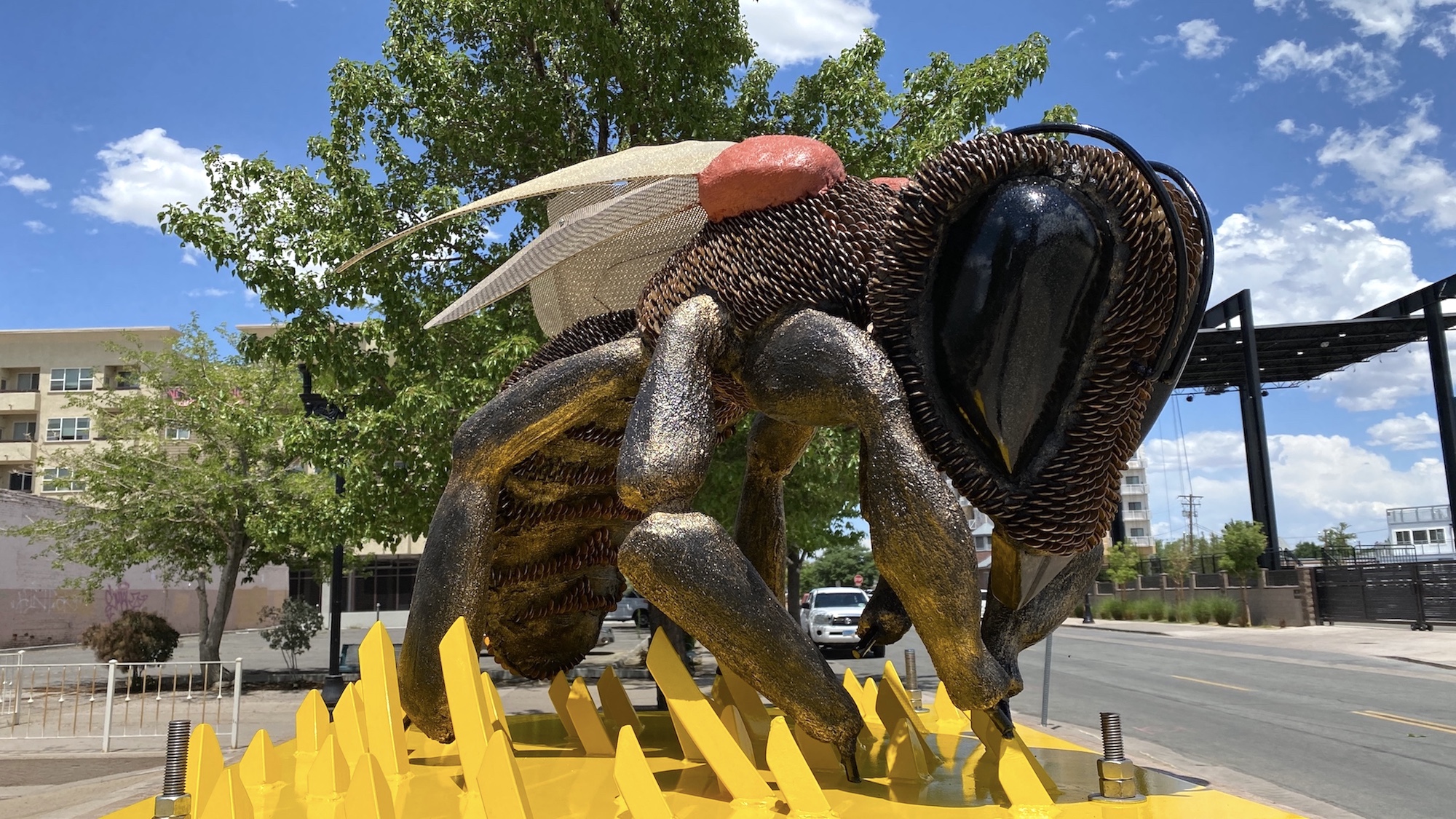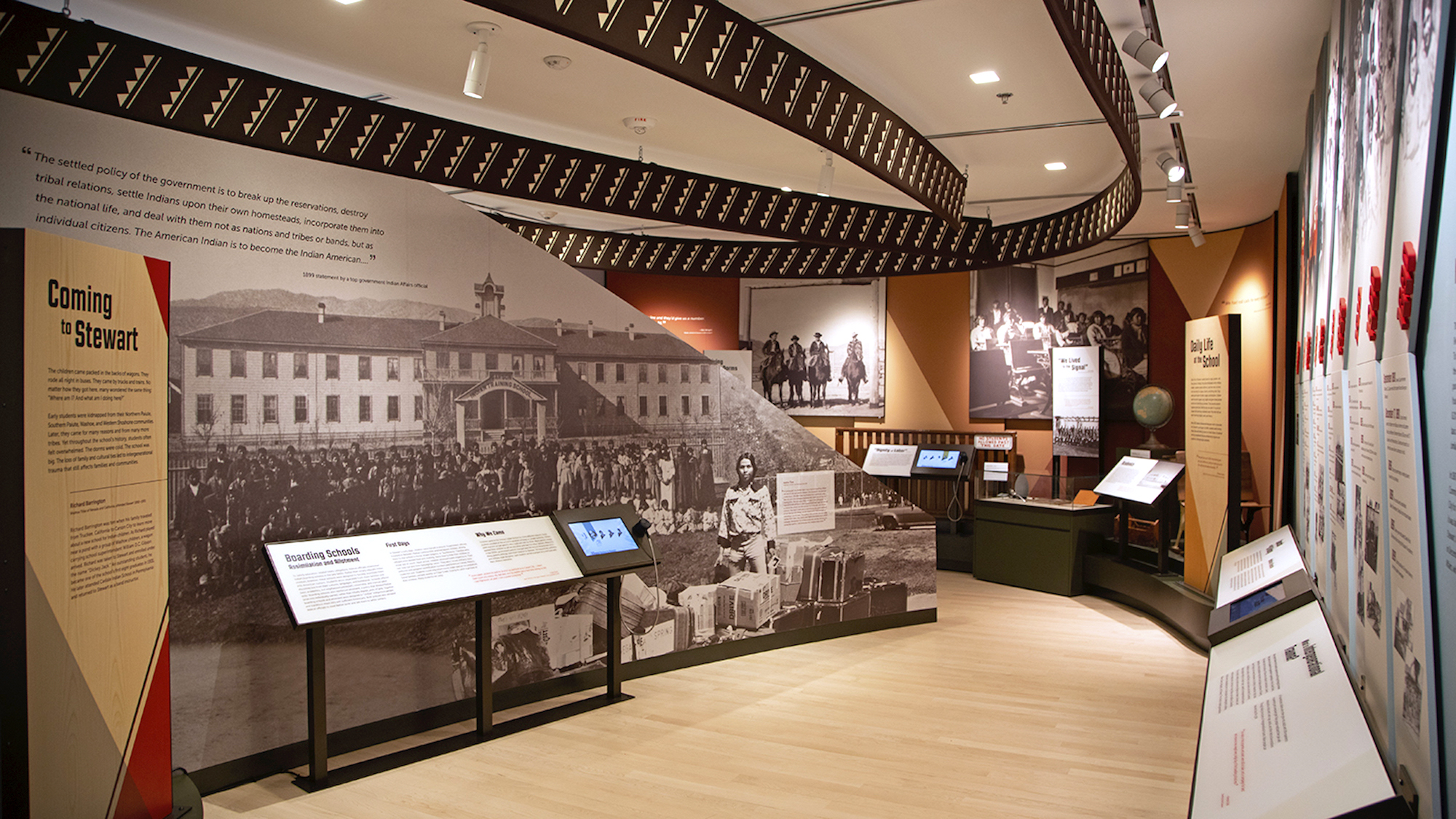In June 2021, the once-dreary Reno Transportation Rail Access Corridor (ReTRAC) in Downtown Reno was transformed into a vibrant ground mural named “Locomotion,” depicting abstracted Reno-themed images and symbols, such as train tracks, mountains, sagebrush and the city flag. Photo: Mike Higdon / Downtown Reno Partnership
 The new Sparks Art Walk in Downtown Sparks features five new sculptures, including the “Sagebrush Bee,” a honeybee whose fur is made of nearly 5,000 pennies. Photo: City of Sparks
The new Sparks Art Walk in Downtown Sparks features five new sculptures, including the “Sagebrush Bee,” a honeybee whose fur is made of nearly 5,000 pennies. Photo: City of Sparks
 The Stewart Indian School Cultural Center and Museum in Carson City tells the stories of the thousands of American Indian children from western tribes who were educated at Stewart. Photo: Travel Nevada
The Stewart Indian School Cultural Center and Museum in Carson City tells the stories of the thousands of American Indian children from western tribes who were educated at Stewart. Photo: Travel Nevada
Comments
Use the comment form below to begin a discussion about this content.
Sign in to comment